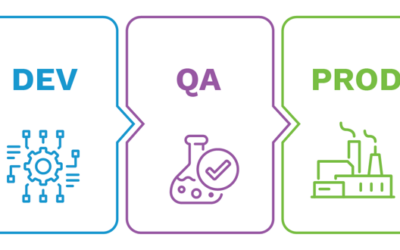7 Key Factors to Consider When Selecting New Enterprise IT
Buying new enterprise technology is a crucial decision, as good choices often stay in place for a long time. And bad choices can be extremely costly.
Buying new enterprise technology is an important decision, as good choices often stay in place for a long time (for example, IBM still has roughly 6,000 mainframe customers — including 355 of the Fortune 500). And bad choices can be extremely costly.
That’s why buying cycles often take close to a year, and involve half-a-dozen or more members on the selection team.
Questions to Ask
Many of the criteria are obvious: does the product meet functional requirements? Is it a good value? Does the vendor have a solid track record?
But there are equally important though less overt factors to take into consideration when selecting enterprise technology. A few months ago, a post here covered six questions to ask when choosing an IT vendor, from CIO magazine. Here are seven more decision criteria to use, according to eWeek—along with the answers you’d get from Kinetic Data.
“It’s astounding how many choices enterprise IT managers and administrators now have when the time comes to build or refresh a system. Starting with hardware, software and services within the data center, moving up through value-chain networks and then to cloud services, there are myriad decisions to make as new products are introduced each year. Then, within each of those categories are multiple subsets of decisions to make, especially on the software side. (Here are) key points to consider in the enterprise IT selection process.” — Chris Preimesberger, eWeek
Cultural Fit
Essentially, is the vendor a solid match for your organization; is their technology cutting-edge but not bleeding-edge (or worse, heading toward obsolescence)? Is your team comfortable working with their people? Do they inspire confidence?
At Kinetic Data, we balance fun with serious effort.

In addition to Zubaz, rainbows and unicorns, and presenters in Jedi robes, one session at this year’s Kinetic Enthusiasts Group (KEG) event began with a detailed recap of a Simpsons episode. Our support team demonstrated how they use oversized dice and a whiteboard filled with canned responses to address support issues (as well as a detailed explanation of the sophisticated methodology and problem collaboration software we actually use to resolve challenging issues in complex technology environments). The entire audience of employees, customers and partners sang Happy Birthday to a member of our sales team.
And yet we build serious software. Our products are relied upon by many of the world’s largest corporations as well as numerous federal government agencies, universities, financial institutions and service providers. We’ve helped our customers slash request submission and fulfillment times, dramatically increase employee satisfaction, and save millions of dollars in service delivery costs.
Engagement Factor: It’s All About the UI
Regardless of functional fit or application performance, employees won’t use technology that’s cumbersome and doesn’t engage them.
Our products are designed to enable our customers to build branded and themed request portals and other user interfaces that are simple, intuitive and engaging. We’re thrilled when customers tell us their service request portals get user feedback like ““magnificent design,” “bravo,” and “this is excellent!”
Vendor Growth Trajectory
Does the vendor understand and anticipate your needs well enough to not only solve the problems you’re facing today, but also take your performance to the next level?
This is at the core of Kinetic Data. We’ve been, for example, thinking, talking and writing about what’s beyond the IT service catalog for a long time. We’re recognized as one of the first companies to talk about and deliver on the concept of enterprise request management (ERM).
And the Kinetic Platform supports a range of open communication protocols so it will work with the platforms and applications you own today, as well as whatever you have in place tomorrow.
ROI of Application Speed
eWeek looks at this purely in terms of application speed (e.g., screen load time). That’s one important metric certainly, but when making an enterprise IT vendor selection, look at the concept of “speed” more broadly: how long does the solution take to implement? To begin to provide value? How much time will it save employees in their day-to-day tasks?
Taking an incremental approach to ERM using Kinetic Data applications, companies can begin to see benefits in 30-60 days. Enterprise service catalogs can start with a few common services and be built out over time, so the value continues to grow, delivering value to the customer almost immediately.
User time savings is also significant when determining return on investment. How long does it take users to learn the application? How many clicks are needed to complete a common task? Forrester Research has studied and reported on how employee productivity is maximized when they are “in flow.” As applications that aren’t part of the daily routine for most workers, Kinetic Request ERM portals and enterprise collaboration tools are simple and intuitive, so employees can quickly submit requests and resolve issues without losing their rhythm.
Prerequisite User Skills
How much training is needed to use the vendor’s tools–both from the standpoint of the internal technical experts responsible for managing and administering the application or platform, and for end users?
Kinetic Data provides training for authors, administrators and developers—typically the small group of individuals inside a customer’s business who will be building out portals, processes, service items, or integrations using our tools.
But department managers and process owners who want to add service items to the ERM portal can often do so with only minimal technical assistance.
And for end users, the training required to use the portal is about the same as what it takes to use Amazon.com or Facebook (i.e., none).
Currently, employees are often forced to use different systems and methods for requesting services from different internal groups (IT, HR, facilities, finance, etc.). Even when requests can be submitted online, forms are often cumbersome and complex, asking for unnecessary or redundant information.
Portals built with Kinetic Request however can automatically pre-populate fields with basic information based on user login. Dynamic questioning changes fields based on answers to previous questions. Employees are asked to enter only the information absolutely necessary to complete their requests. And they have one common portal for requesting any type of service. All of which greatly increases speed of request submissions—and gives employees more time to spend on their work.
Internal Support Requirements
See the section above.
Fewer Moving Parts With Single Vendors
“When it comes to deploying and maintaining a solution, the number of moving parts matters a lot. That’s why iPhone owners are generally happier than owners of other phones,” according to eWeek.
We actually have to take exception to this criteria. While the statement above may be accurate as far as it goes (and many at Kinetic Data, incidentally, are big Apple fans), iPhones aren’t like ERP or ITSM suites. The vendor with the best CMDB or help desk application may not offer the best service catalog, or survey management, or calendar tool.
Recent research from HDI and itSMF USA backs this up: suites aren’t always sweet. Fortunately, organizations can use an enterprise service integration approach to connect applications and data in a more scalable, reliable and manageable manner than point-to-point integrations.
Such interoperability is vital when orchestrating the movement of information between different systems (ITSM, HR, finance, supply chain, etc.) on different hardware platforms, some on-premises and some in the cloud, some managed internally and some outsourced—possibly to multiple external service providers.
Taking all of these factors into account—along with core considerations like functionality, value and vendor experience—will help your team arrive at a prudent decision when selecting an enterprise IT vendor. A decision your organization can live with for a long time, and possibly even one that will make you heroes to the business.
Next Steps
- Curious about ERM? Download the white paper Enterprise Request Management: An Overview.
- Join the discussion in the Enterprise Request Management group on LinkedIn.
- Contact Kinetic Data to discuss your service request management and process automation challenges.



